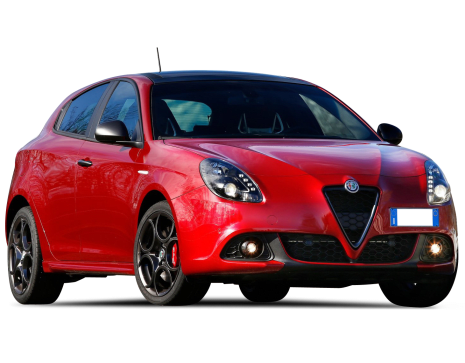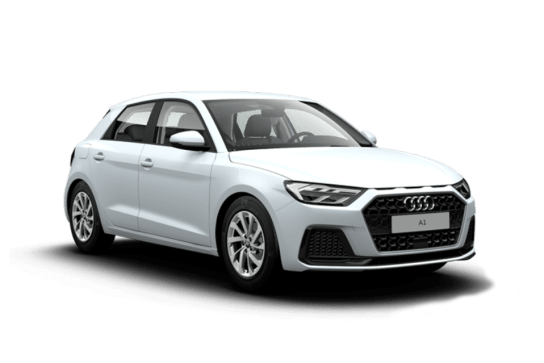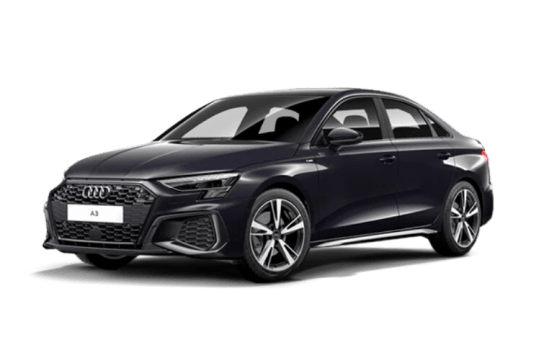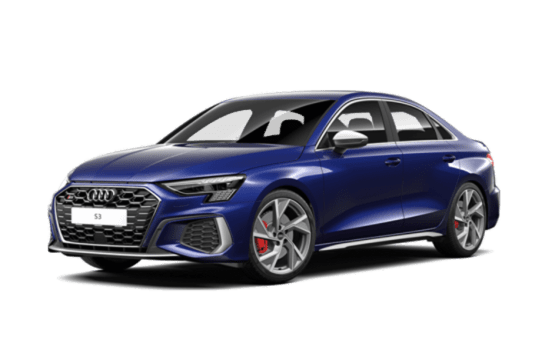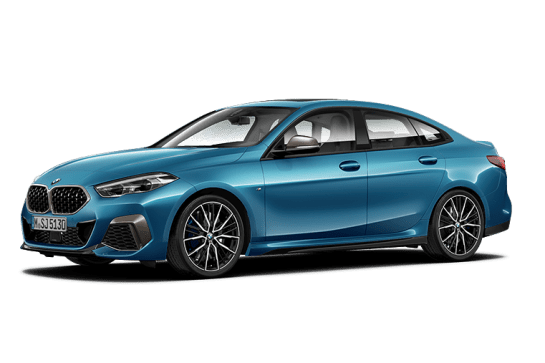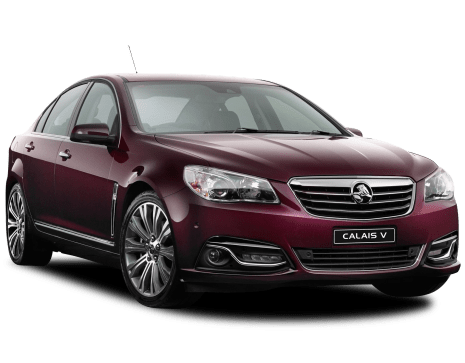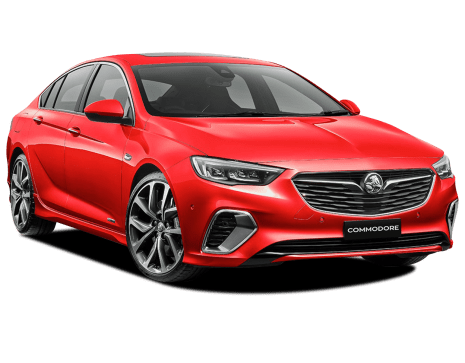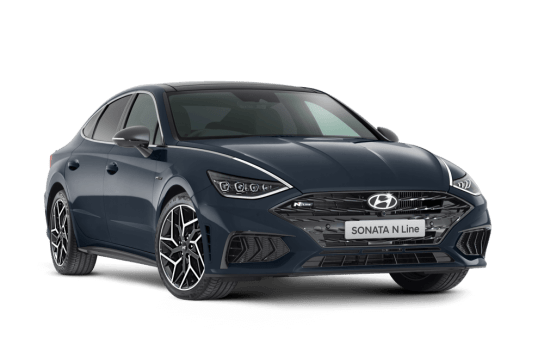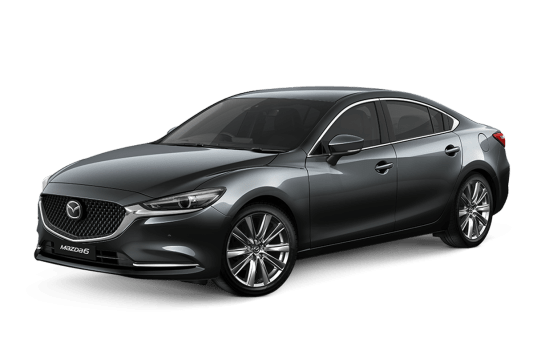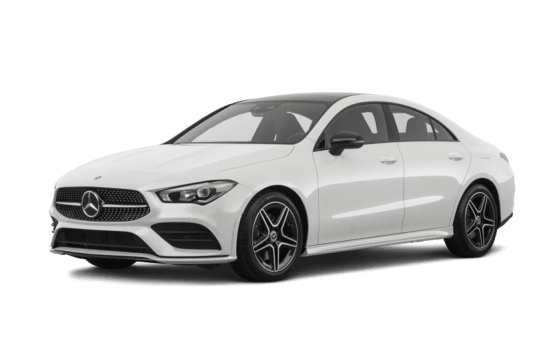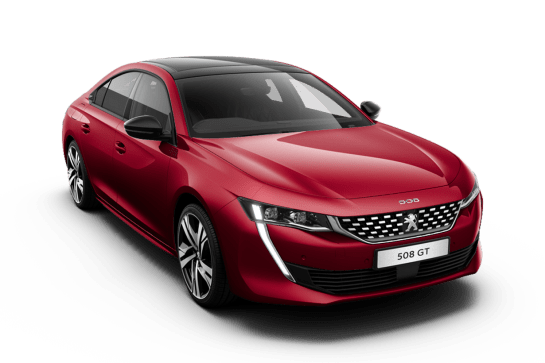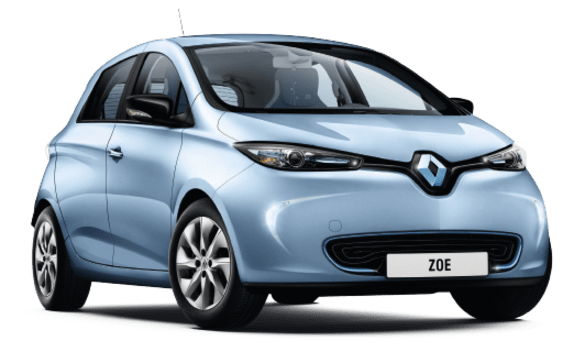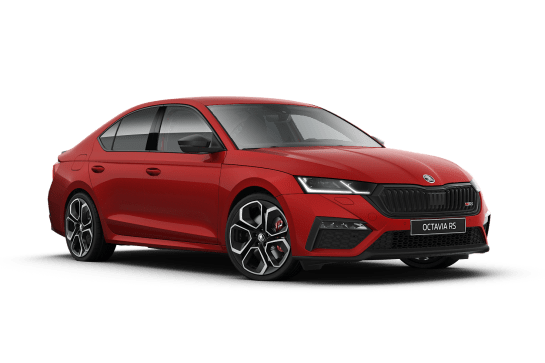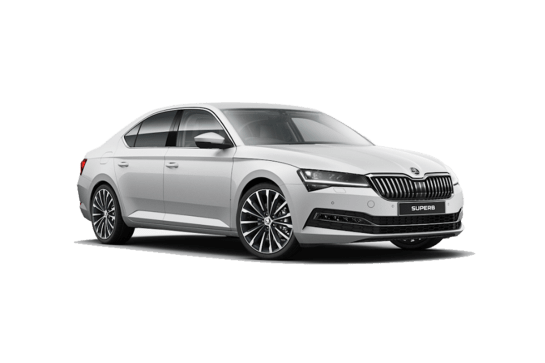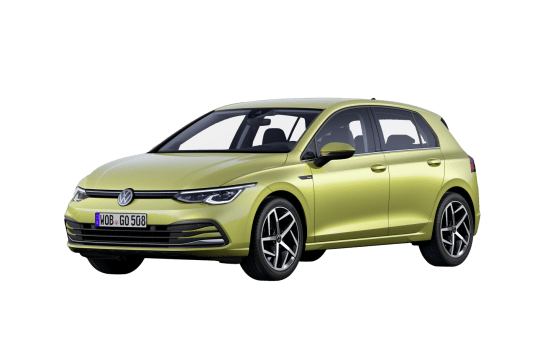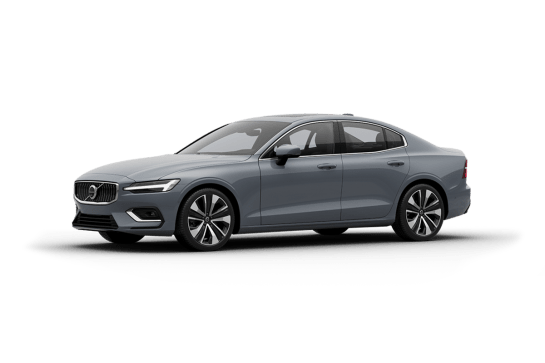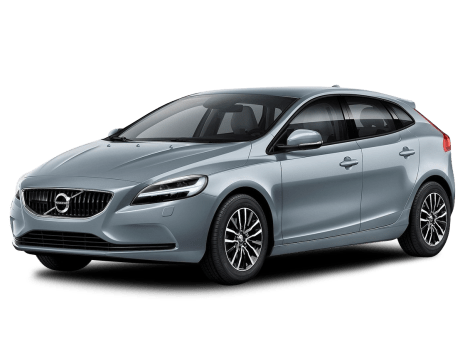
Kia Stinger VS Skoda Octavia
Kia Stinger
Likes
- Great looks
- Great chassis
- Excellent spec
Dislikes
- Servicing costs
- Tight rear accommodation
- A bit pricey for a Kia
Skoda Octavia
Likes
- Value
- Practicality
- Safety
Dislikes
- Floaty ‘Comfort’ mode
- Drinks premium unleaded
- No 12V outlet in cabin
Summary
Kia Stinger
There is nothing quite like a car company occasionally building a car that could be considered a risk. And there are all kinds of risks in the car business - the market isn't ready for that car, people don't identify your brand with this or that type of vehicle, the list goes on. And it's long. It's very easy for me to sit on the sidelines and say, "Pft, what were they thinking?" Few cars land on your driveway without years of thinking having already gone into their development.
The Kia Stinger is the kind of car that would have caused lots of thinking and plenty of hand-wringing at Kia HQ in Korea. Not because it was a bad idea - it wasn't. Not because it's a bad car - it is, in fact, the opposite. And not because SUVs have already changed the way we look at cars - Kia has done well out of that.
It's just that Kia has never produced a car like the Stinger. A five-door coupe-sedan, rear-wheel drive and with a focus on driver dynamics. Most of us know very well how the Stinger GT burst on to the scene in a blaze of well-deserved glory. It's not all about the GT, though. There's a whole range of Stingers and just below that very accomplished sports sedan is the Stinger GT-Line.
| Safety rating | |
|---|---|
| Engine Type | 2.0L turbo |
| Fuel Type | Regular Unleaded Petrol |
| Fuel Efficiency | 8.8L/100km |
| Seating | 5 seats |
Skoda Octavia
Where were you in the year 2000? Cowering in a dark corner, hoping the Y2K bug wouldn’t wipe out civilisation as we knew it? Or, confidently on the front foot, shopping for a new car to transport you and your family safely into the next millennium?
If it was the latter, the most popular options back then were hatchbacks, sedans and wagons. The Ford Falcon, Holden Commodore, Mitsubishi Magna and Toyota Camry were at the height of their powers and the term ‘SUV’ was largely confined to North America, describing off-road outliers like Jeeps and Range Rovers.
Brands from Mazda to Mercedes-Benz, Peugeot, Volvo and heaps of others all offered family-friendly wagons alongside their sedan counterparts.
Read more about
- Segment-bending Euro rival to Kia EV5, Xpeng G6, and Tesla Model Y takes shape ahead of Australian arrival in 2025
- Your next family SUV? Mazda CX-80, Kia Sorento and Hyundai Santa Fe-rivalling 2025 Skoda Kodiaq standard features revealed
- Why so many car brands lost sales in Australia during 2024 including Tesla, MG, Ram and Jeep
Fast forward a quarter of a century and we’re in a world of SUVs and utes, with the traditional ‘station wagon’ almost consigned to history. But Skoda is keeping the wagon dream alive with its mid-size Octavia sedan (liftback) and wagon.
And the subject of this review is the just-arrived, 2025 model year iteration of the flagship Octavia RS, designed to combine functional pragmatism with smile-inducing performance. Let’s check it out.
| Safety rating | |
|---|---|
| Engine Type | 2.0L turbo |
| Fuel Type | — |
| Fuel Efficiency | 7L/100km |
| Seating | 5 seats |
Verdict
Kia Stinger7.6/10
The Stinger GT-Line is a great machine. It looks good, feels good to drive and while it's not the cheapest large sedan, it's also not a Camry. With a strong European vibe, it's a nice bridge between boring-dependable and out-of-reach European. Boasting a strong link to Europe in its chassis DNA, it has it all apart, maybe, from the badge.
But Kia has a habit of doing unexpected things and the Stinger was a bold move worth making just for the halo effect of having such a cool car in the range. It has done good things for the company's reputation, as though the rest of the range isn't proof already.
Skoda Octavia8.3/10
While other brands may have a higher profile, the quality of this Octavia RS proves Skoda deserves a greater share of the limelight. If you’re thinking about a primo mid-size sedan, or wagon, or even a medium SUV, this car combines satisfying performance with low-to-the-ground dynamics, immense practicality, top-shelf safety and solid value-for-money. It’s nicely put together using quality materials and the ownership package is class competitive. Do yourself a favour and add it to your new-car shopping list.
Note: CarsGuide attended this event as a guest of the manufacturer, with travel, accommodation and meals provided.
Design
Kia Stinger
The Stinger looks fantastic. I know the car has its detractors, but there's a massive Euro influence here that sits well in my visual cortex. It's maybe not as ooh-aah as the A5 or the outgoing BMW 4 Series Gran Coupe, but the Stinger can and should be mentioned in the same breath. It looks terrific, even if it is a bit fussier in the details.
From the signature grille, the low beltline, big wheels and sports coupe roofline, it looks sleek and sophisticated.
Inside is a bit more conventional, with some real classic touches such as circular air vents, conventional-looking gear selector and a flat-bottomed steering wheel. It's cool, clean and, with the big new screen, a bit more techy-looking than before. There are lots of nice materials and the odd rogue one, but it's a good cabin that feels well put-together.
Skoda Octavia
The current Octavia complies with Skoda’s sharp and angular approach to exterior design, with cool, jagged LED headlight clusters sitting either side of a blacked-out octagonal grille.
A brand signature is the bonnet shutting low and flush over the front guards to create a broad hood panel with longitudinal character lines running down its length. Similar creases flow confidently along the car’s flanks with 19-inch alloys filling the wheel wells nicely.
A smoothly tapering turret ends with a steeply raked rear screen on the sedan and wagon with angular LED tail-lights following a similar pattern to the headlights.
As well as the black grille, car-spotters should look out for the RS’s black finish on the window frame surrounds, roof rails (wagon only) wing mirrors and tailpipes as well as red brake calipers and RS sports bumpers front and rear.
Always a subjective call, but I for one think this car looks distinctive and contemporary while avoiding unnecessary flashiness.
Inside, the treatment is relatively reserved, with a grey through to black colour palette and high-quality materials, including soft-touch surfaces around the dash, doors and console, as well as ‘mouse fur’ and faux carbon sections on the upper dash.
The sports front seats are trimmed in a combination of synthetic leather and synthetic suede with quilted panels in the centre of the cushion and backrest. They feel as good as they look and are easy to get in and out of. Red contrast stitching throughout the interior dials up the racy tone.
A sizeable central media touchscreen sits proud of the dash with the VW Group’s ‘Virtual Cockpit’ ahead of the driver configurable through multiple set-ups. And a smattering of dark chrome and brushed metal highlights (including on the pedals) finish off a beautifully executed interior.
Practicality
Kia Stinger
This is really a four-seater car. While there is good legroom in the rear, the falling roofline, small door aperture and huge transmission tunnel box you in a bit, almost rendering the middle seat useless for all but the shortest of folks. You do get your own air vents, though, which is generous.
The low roof also means limited headroom, made a little worse by the standard sunroof. I had room but taller people might brush the headlining. There are two cupholders front and rear for a total of four and each door has a bottle holder.
The boot is a modest-for-this-size 406 litres, rising to 1114 litres with the seats down. Access to the boot is good if not spectacular; the hatch opens wide but a slightly narrow aperture means loading and stowing flat packs and things like that could be a struggle.
Skoda Octavia
Practicality is an area where Skoda comes into its own. At every turn the brand’s design and engineering teams have obviously kept day-to-day usability in mind with thoughtful tweaks to make life easier.
Some have become low-key famous like an umbrella slotted into the driver’s door (Rolls-Royce-style) and a small lidded rubbish bin in the driver’s door pocket.
But over and above that, the Octavia’s efficient packaging means in a car measuring just on 4.7m long there’s heaps of room up front for the driver and passenger, with lots of handy storage options.
Aside from generous door pockets there’s a box between the seats with a padded lid (adjustable for height and length when in use as an armrest), a 15W wireless charging pad (with ventilation from below to keep devices cool), a big glove box (with pen holder), multiple cupholders, a cupholder insert able to hold a phone and/or some coins, numerous oddments trays and a sunglasses compartment overhead (not fitted with optional panoramic sunroof).
And in the back, sitting behind the driver’s seat, set for my 183cm height, there’s tons of leg and headroom with more practical design thinking on display.
For example, map pockets on the back of the front seats have a phone-sized slot stitched into them. There are pull up shades for each window, big bins in the doors with plenty of room for bottles and more, a pull-down centre armrest with fold-out cupholders (plus some oddments space), adjustable climate control vents plus a box on the floor for extra bottles and ‘stuff’ (removable if you need foot room for a centre passenger).
Power and connectivity runs to five USB-C sockets (two front, two rear and one near the rear-view mirror for dashcam duty) plus a 12-volt outlet in the boot.
Speaking of which, head to the boot and the ‘plenty of room’ theme continues. With the 60/40 split folding rear seat upright there’s 600 litres of space in the sedan and 640 litres in the wagon. Lower the backrest and that number increases to 1555 and 1700 litres, respectively. That’s plenty, and more than the Mazda6.
The sedan and wagon feature anchor points for securing loose loads, extra storage bays behind the rear wheel wells, there’s a ski-port door behind the rear armrest, load divider rails in the sedan, remote release handles for the rear seat, bag hooks, a luggage net… the lot.
The powered tailgate includes hands-free opening, there’s a space-saver spare under the floor and towing capacity for a braked trailer is 1600kg (750kg unbraked).
Price and features
Kia Stinger
As is the custom at this time of the year, the Stinger scored a mild update for that minty-fresh taste at the dealer. Not much has changed in the looks department (good) and the most obvious tweak is the brand-spanking new media system already seen in the brilliant new Sorento.
The GT-Line is one of two four-cylinder variants of the Stinger, priced at $57,230 or $60,690 driveaway, a solid $7000 more than the 200S and it's $730 more than the MY20. It's also uncomfortably close to the 330S, which has the delicious twin-turbo V6, but obviously a lower equipment level.
For your money you get 19-inch alloy wheels, a 15-speaker stereo, dual-zone climate control, camera package that includes a reversing camera, side cameras and front camera, keyless entry and start, front and rear parking sensors, active cruise control, powered heated and ventilated front seats, sat nav, automatic LED headlights, head up display, leather seats and wheel and even more besides. It's a lot, which is fair given the price.
The 15-speaker stereo is run by the excellent new media system on the excellent new 10.25-inch touchscreen. It's great to look at, has some really cool ideas in it (including the hilarious soundscapes list which includes, for some reason, a noisy cafe environment), DAB and Apple CarPlay and Android Auto.
Skoda Octavia
Priced at $58,490 for the sedan and $59,990 for the wagon, both before on-road costs, the Octavia RS has one competitor that meets the mid-size sedan and wagon criteria with cost-of-entry somewhere in the same ballpark. And that’s the current Mazda6 20th Anniversary Edition.
Pitched at $54,385, before on-road costs, for the sedan and $55,685 (BOC) for the wagon, the Mazda goes toe-to-toe with the Skoda on size, equipment and performance, although the ‘6’ leans more towards a premium rather than outright performance vibe. And the Mazda has recenetly been discontinued in Australia.
The Accord VTi-LX Hybrid ($59,900, drive-away) puts Honda in the sedan mix and if you’re considering a pure electric medium sedan, the BYD Seal Premium comes in at $58,798, before on-roads while the Tesla Model 3 Single Motor RWD sits at $54,900.
So, aside from the safety and performance tech, covered a little later, what can you bank on in terms of included features for a price tag giving $60K a serious nudge?
The answer is… heaps. Standard equipment on the Octavia RS includes three-zone climate control, adaptive cruise control, a 13-inch multimedia touchscreen, sat nav, 12-speaker Canton audio (with digital radio), a 10-inch configurable digital instrument display, a head-up display, sports front seats (heated with six-way power adjust, memory and massage function), heated rear (outboard) seats, a power tailgate (with hands-free opening), keyless entry and start and rain-sensing wipers.
There’s also ‘Intelligent Park Assist’, LED external lighting (including matrix LED headlights), 19-inch alloy rims, heated and power-folding exterior mirrors (with memory function), synthetic leather and synthetic suede trim, a flat-bottom leather-trimmed steering wheel, alloy finish pedals and rear privacy glass as well as wireless Android Auto and Apple CarPlay.
Worth noting solid, metallic and pearlescent paint options (seven colours) are included as standard, with the single premium metallic ‘Velvet Red’ colour adding $770.
That’s as much fruit as you should expect in this part of the market and a bit more.
Under the bonnet
Kia Stinger
Under the GT-Line's bonnet is Kia's Theta II 2.0-litre four-cylinder turbocharged engine. It's the same as before, with a stout 182kW and 353Nm. Driving the rear wheels is an eight-speed automatic from the Hyundai-Kia empire.
It's pretty rapid, knocking out the 0-100km/h spring in just six seconds, a mere 1.1 seconds slower than its faster sibling's 4.9 for the benchmark.
Skoda Octavia
The Octavia RS is designated ‘195TSI’ which relates to the power output of its 2.0-litre, four-cylinder, turbo-petrol engine driving the front wheels through a seven-speed dual-clutch auto transmission.
It’s a fourth-generation evolution of the Volkswagen Group’s long-serving ‘EA888’ engine series, an iron block/alloy head unit featuring direct-injection and variable valve timing to produce (you guessed it) 195kW and 370Nm.
Efficiency
Kia Stinger
Kia's claimed combined cycle figure is 8.8L/100km. As the Stinger goes without trickery like stop-start or mild hybridness, it's no surprise that my week with it yielded an indicated 10.4L/100km, which isn't bad for a 1750kg sports sedan that was not molly-coddled and also spent some time in a resurgent case of crap traffic in Sydney.
It also drinks standard unleaded, which is a nice touch.
Skoda Octavia
The Octavia RS’s official fuel consumption figure on the combined (urban/extra-urban) cycle is 7.0L/100km, the 2.0-litre turbo-petrol engine emitting 159g/km of CO2 in the process (wagon 160g/km).
A start/stop function is standard and on a launch drive program through rural Victoria, covering several hundred kilometres’ worth of urban, B-road and freeway running we saw a (dash-indicated) figure of 6.9L/100km. With a 50-litre fuel tank on board, the RS’s theoretical range is around 715km.
In the city, expect an average in the high 8.0 range, which isn’t out of order for a 1.5-tonne sedan (1.6-tonne wagon).
Driving
Kia Stinger
I have driven and loved the Stinger GT. It's tremendous fun, goes like a rat running away from a cut snake, which itself is being chased by a mongoose with its bottom on fire, and it handles like a proper sports sedan.
The GT-Line is obviously not that quick, but it's not slow, either. But it does take a bit of the GT's DNA and delivers a driving experience eerily reminiscent of an E90 BMW 3 Series. That seems like an out-of-date reference, but it was a beautiful car to drive with a lovely balance of ride and handling.
The steering has good feel and you know what's going on underneath the front wheels. You sit towards the centre of the car, also a BMW trademark. Turn the wheel and the car goes with you, despite its bulk, and it's happy to dance a bit with its limited-slip diff.
The 2.0-litre turbo does a good job in most conditions but you feel it coming up short when you're hustling it. It's never breathless, but the torque deficit to the turbo six is clear. If you've not driven the faster Stinger, you may not notice, but there's a touch of lag in the 2.0 that contributes to the idea it's working hard to move the big sedan.
But back off a little and it becomes a fluid, fun drive. In town it's firm but very comfortable, gently bumping rather than crashing into potholes. The rear suspension is a complicated five-link set-up that costs money and eats into boot space but delivers the goods.
Given its length the Stinger is a bit tough to manoeuvre in tight spaces and its 11.2m turning circle isn't too flash either, but you soon get used to it.
Skoda Octavia
Skoda claims 0-100km/h acceleration in 6.4 seconds for the Octavia RS sedan and 6.5sec for the wagon and it feels willing with solid mid-range punch available.
Peak power comes on stream up high (5250-6500rpm) but maximum pulling power is on tap from 1600-4500rpm, which is spot-on for urban running, easy highway cruising and safe overtaking.
A sports exhaust dials up a rorty note when pushing on and the seven-speed dual-clutch transmission proved quick and smooth on a launch drive covering mainly rural B-roads and some freeway sections.
Steering wheel-mounted paddles add extra involvement when you’re in the mood to push through some twisty stuff and select ratios manually.
Speaking of corners, suspension is by struts at the front and a multi-link arrangement (unique to the RS grade) at the rear, with an electronically controlled limited slip differential and ‘Dynamic Chassis Control’ standard. Ride height is 15mm lower than the standard Octavia.
DCC is Skoda code for an adaptive damper set-up and the system offers a ‘Comfort’ mode to help manage bumps, although it adds an air of floatiness on the open road. As the name implies, ‘Sport’ buttons everything down and road imperfections immediately make their presence felt. ‘Normal’ is surprisingly comfortable without upsetting the car’s balance and overall compliance.
Standard rubber is 225/40 Bridgestone Potenza S005, providing a good grip vs comfort compromise, and the electrically assisted progressive rate rack and pinion steering is accurate, providing good road feel without being too sharp or ‘pointy’. Braking is by ventilated discs all around and the pedal is strong and progressive.
Under the heading of miscellaneous observations, engine, wind and road noise are modest, the grippy sports front seats remained comfortable over several hours behind the wheel, plus a relatively tight 10.4m turning circle and standard 360-degree camera view system make parking easy.
Safety
Kia Stinger
The Stinger ships with an impressive safety package that includes seven airbags, ABS, stability and traction controls, high- and low-speed forward AEB with pedestrian and cyclist detection, intersection assist, lane-keep assist, steering assist, driver attention alert, high- and low-speed forward collision warning, front cross traffic alert and rear cross traffic alert.
You get two ISOFIX points and three top-tether anchors.
The Stinger scored five ANCAP stars in 2017.
Skoda Octavia
The current Skoda Octavia was given a maximum five-star ANCAP rating following assessment in 2022. High scores in the adult and child occupant protection categories focused on the stability of the car’s passenger compartment in front offset, full front, side and pole impact crash tests.
For the 2025 model year, standard active (crash-avoidance) tech now includes turn assist and advanced driver fatigue detection, which is on top of auto emergency braking (AEB) operating from 5.0-250km/h (with car and ‘vulnerable road user’ detection plus junction assist), lane keeping assist (and emergency lane keeping), rear AEB, blind-spot monitoring, rear cross-traffic alert, a reversing camera, a 360-degree camera view, tyre pressure monitoring, front and rear parking sensors and more.
If, despite all that, a crash is unavoidable the airbag count runs to 10 - dual front, front side, rear side, side curtain, front centre and driver's knee.
There are three top tether points for securing child seats across the second row with ISOFIX anchors on the two outer rear positions.
That’s an impressive safety run down, as good or better than any category competitor.
Ownership
Kia Stinger
Kia's ground-breaking seven year/unlimited kilometre warranty along with roadside assist for the first 12 months. Each time you service your car at Kia, you get an extension on your roadside assist for up to eight years.
Perhaps the only thing that makes you go, "Oh, what?" about the Stinger is the 12 months (Good)/10,000km (Oh...) service intervals. That's pretty common with Kia's turbo engines but is a little inconvenient. Then there's the cost - prices range from $312 to $685, which adds up to $3459 over the first seven services. If you stay under 10,000km/year, that's not bad going at under $500 per year for servicing, but if you're a high-miler, it will add up.
The servicing isn't outrageous - and the prices are capped - but it's not cheap, either.
Skoda Octavia
The Octavia is covered by Skoda’s seven-year/unlimited kilometre warranty, which is ahead of the mainstream five-year warranty pack, although a little short of some, like MG and Mitsubishi at 10 years.
Service is recommended every 12 months/15,000km and a four-year/60,000km service pack will set you back $2000, with 12 months’ roadside assistance topped up for another year after each trip to an authorised workshop.
That $500 per service charge is a solid amount but not outrageous for a premium, especially Euro, mid-sizer. For reference the Mazda6 20th Anniversary averages $552 per service over the same period.


